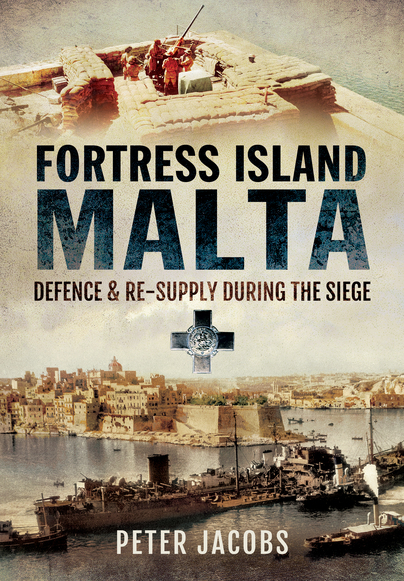
Fortress Island Malta: Defence and Re-Supply During the Siege. By Peter Jacobs. Pen and Sword, Barnsley, 2016.
Reviewed by John Johnston
SIEGES are one of the features of the Second World War in Europe, from the siege of Warsaw in September 1939 to the fall of Wroclaw in May 1945. The siege of Malta began in June 1940, when Italy entered the war as a member of the Axis, and finished in November 1942, when the Axis air forces had become too over-stretched to maintain the siege. Much has been written about the siege, and Peter Jacobs, himself the son of a veteran of the Malta convoys, has synthesised these writings and drawn upon primary sources to produce an up-to-date account of the siege and the events surrounding it.
The original plan to surrender Malta was abandoned when the fall of France left the western Mediterranean in Axis hands and made the island into an outpost from which to observe and interdict Axis shipping. Although the island almost immediately came under attack, resupply could be maintained relatively easily as long as the British dominated the eastern Mediterranean. With the German capture of Greece and Crete, domination of those waters was lost and resupply of the island became more difficult and sometimes impossible. Yet, as the only asset with which to exercise sea control in the Mediterranean, the British had to maintain the island.
Some resupply could be improvised – using submarines to carry stores, for example – but sending heavily protected convoys through enemy-controlled waters was the only realistic means of providing sufficient food, medicine, and materiel to sustain the civilian population and for the garrison to attack Axis convoys moving between Sicily and Libya. The costs of such operations were enormous: even with escorting battleships and aircraft carriers, at least half of each convoy was lost to enemy action. Altogether, the Royal Navy lost twenty-seven capital ships, forty submarines, and several minesweepers and the Royal Air Force more than 700 aircraft during the siege, while nearly 6,000 servicemen and merchant navy sailors died, and over 1,600 islanders were killed in air attacks and an unknown number succumbed to hunger and disease.
Peter Jacobs recounts the story of the island’s defence and resupply clearly and dispassionately. As he notes, this is only part of the story, but those exploring other aspects of the siege, such as the attitudes of the civilian population or Axis strategy in the Mediterranean, will find Jacobs’s work an invaluable starting point, with a comprehensive bibliography and guide to the siege papers in the UK National Archives. For the general reader, Jacobs has produced an excellent tale of human courage and endurance.



